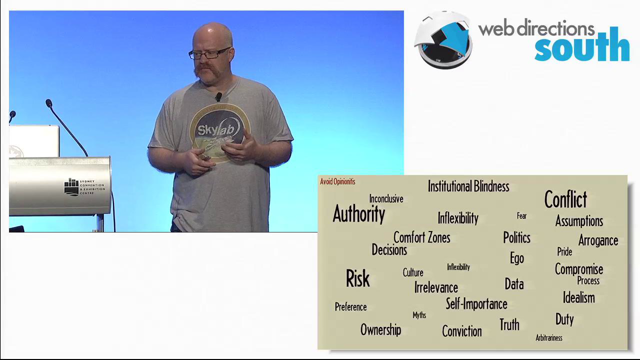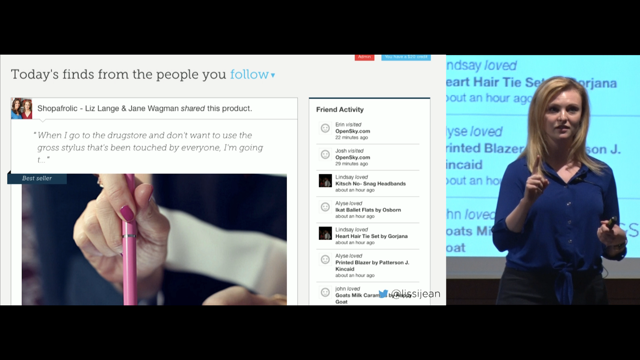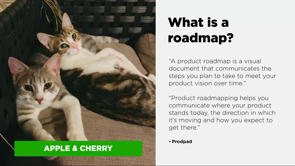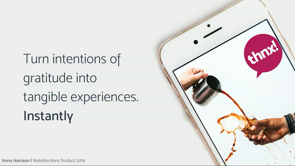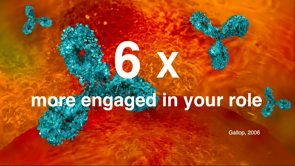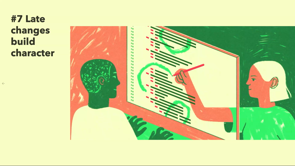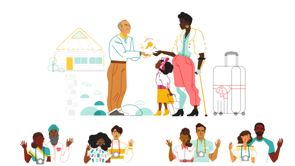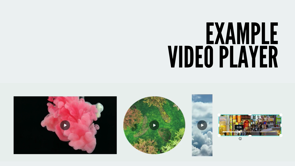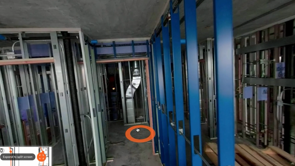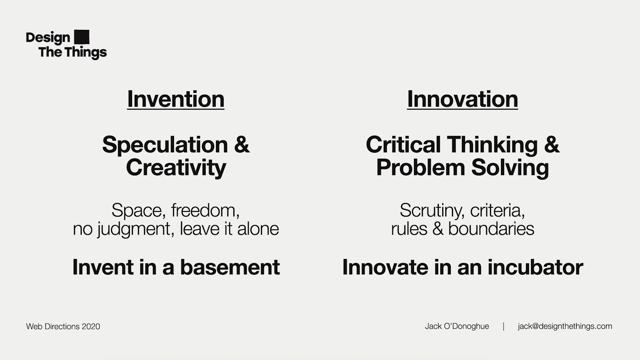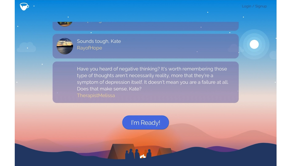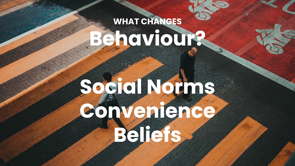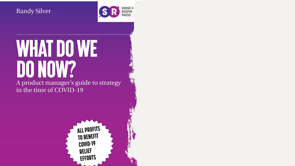Going Remote. Iterating to a high trust team in uncertain times

(upbeat music) - Kia ora.
My name is Alejandro Patterson.
I'm a product manager, product person based in Sydney. And I was originally born or well, I was born in Costa Rica, and I moved to New Zealand at the age of 16. I've been an entrepreneurship since the very young age of 13.
But that's really a story for another day.
Product management kind of has been in my veins, I just didn't realise that there was a title for it for quite a long time.
So today, I'm gonna be talking a bit about my story of going remote, my focus is gonna be talking about my experience. So giving you guys I guess, an insight into how this experience of going remote due to COVID affected me, but also how I used it as an opportunity to build my team and a way of working much more quickly And I think it's something talking to my team has come across really well.
Is actually how quickly we were able to move. But let's talk a bit about like joining AIG. So I actually joined on the second of March 2020. When I was looking around for a role.
I knew I wanted a big challenge, but I wasn't sure what sort of industry I wanted to go into. I'd had quite a bit of experience, leading up to this job hunt.
Launching startups in a few industries.
And I kinda felt like this is an opportunity to go big. See what happens in these larger organisations where I'd never worked before.
And take on a challenge that would enable me to learn. Something that's kind of always been in the way that I chase opportunities.
How much can I learn? And how are the people around me enabled to to communicate and learn.
So as I was leading into that second of March date, I was having to think about like, what are the things that I want to achieve in my, the the usual 30, 60, 90 day challenge as you join a team, understand what the requirements are beyond your job description, and meet the team and start forming meaningful connections with them. And of course, I had a high level strategy planned out, but I wasn't sure exactly how that was gonna be formed. So what you see on my slides is kind of the the initial outline of my strategy.
And I like to try and form a really high level space when it comes to designing my onboarding strategy, and what I'm what I'm gonna build for my team. And the reason for that is, if it's short and sweet, and it can be on a page, it's easy to communicate.
It challenges me to be succinct with what I'm trying to achieve.
As you can see, there's a few additional bullet points there that were added.
Post going into shutdown.
I joined AIG, I started communicating with my team, learning about who they were, a lot of us had actually joined to form this team, almost an entrepreneurial team within what was called customer technology.
And we kind of had free rein.
We had a design lab, we had lots of posters, and all of the good things that large corporates feel are important for creating innovation.
And so I'd sketched this out.
I started communicating it, in my second week. Our tech enablement department started, going, hey, there's this COVID thing, we might have to work from home for a while. All of you guys and tech, you guys need to go home and test our VPN and test our systems and do some load testing to make sure that if this thing fully hits that we're ready. I think it was five or seven days later.
We were working from home and we didn't know when we were gonna be coming back. And that really started challenging my thinking around Well, how do I show up as a leader, right? Like, it's all very well and good to have a strategy outline for your team.
But what's my personal strategy? What am I going to be doing? And of course, I've got a value set that I try and communicate.
But I thought it would be really important to be even more refined with that and try and communicate that outwards.
knowing that some of these are my weaknesses. Some of these I actually over index on.
So how do I how do I communicate where I'm strong and where I'm not, so that my team understands if I fall down in some of these areas, they understand why.
And how to call me up on an event, how to support me.
And hopefully this sort of communication would allow us to actually build a much stronger and more resilient communication and team.
So some of the things that I did, you know, thinking about these different points is the first thing I did, and I found a really strange that this wasn't already the norm is sharing the visibility of my calendar.
And I thought that that would be something that would just be a logical, like step for leaders.
And so I just gave them like all of my team and all of my direct stakeholders access to my calendar so they could see what's going on. And they could book stuff.
And I also gave them permission to just give me a call.
To book something in just for a chat.
And I felt like that kinda worked pretty well. Sometimes it meant that I was in a lot of calls. And I think we can all probably relate to that for those of us that work in teams and need to communicate and have been working remote over the last little while.
I made a commitment to my team that although we have a lot of uncertainty going on, that I would provide them as much honest feedback and as much honest accounts of what's happening internally. So as soon as I was communicated something, I'd pass it on to the team.
Sometimes in product management, you have to shield your team, a bit from the outside forces.
And in this instance, I felt like I needed to change that and go the other way, and just have a lot of communication.
And set up ways of communicating that would allow my team not only to hear what's happening, but have input and ask questions of me.
So I guess in the first couple of weeks, we started jamming on this and working through the strategy and working out like, hey, we're gonna need to have Miro approved, what, this isn't approved yet, like one of the tools and what are the processes we're gonna have to set up.
The rituals that we're gonna have to set up to be able to manage the workload.
But I felt like, not only was it important to do that, but it was also important to start thinking strategically around how we're gonna implement these things in a way that using my product had. We could actually iterate on how we were gonna, like move this forward.
Applying one of the basic principles, I like to think of my team as customers, right? They have pain points, they have frustrations, but they also have goals and tasks and things that they love to do.
And if you can align that with the work that they're doing for you, and then build a process around them, rather than fitting them to the process.
I think you build a better team.
And so that's kind of one of the core views of how I manage my team is.
So I spend a lot of time even whether we're remote or not with them, making sure that they have what they need.
And we're gonna talk through a couple of my rituals, soon, that lean into that.
But one of the first tasks I took on post sharing, I guess my view on how we should be approaching this and starting to communicate with my team about, what needs to happen? What processes are we gonna take that we were doing in the real world that we're gonna digitise and the stuff that wasn't existing.
Those, the casual chats, the lunchroom, the walking to meetings together.
How are we gonna manage that? And to be honest, there's probably too many of those to go into, a huge amount of detail on but I'm gonna do my best to walk through some of these. But stepping back a little bit.
I feel like one of the key things that I think, again, I feel organisations don't do that well is actually aligning purpose commitments and values. I feel that workshopping this with your teams not only like, as your core team, but with your stakeholders and your management is one of the key things you should do when you get started.
It not only helps you understand what was already there, but start to shape and align what you're gonna move forward with.
And I feel like that can take centre stage of I guess product strategy as you join and start forming teams.
And for me, this was happening, but not as heavily as when we went to work from home. We started spending a lot more time just having open conversations about what were the things that were important to us as a team. How does that level up to the IAG purpose, which is a pretty critical piece of alignment to have. And we workshopped it.
And over several weeks, we kind of iterated and landed on on some of these values.
And this one mean, like I look at it, I'm like, was I writing that for me? No, this is, this was the team.
So this is who I was but also who they wanted to be as we communicated.
Leadership is not a single person.
Like a single person doesn't need to own it. It's something that actually is a team that if we all own this we can move forward better.
Once we kind of had alignment there and I guess like this seems so linear and all of this is happening in multiple directions and multiple conversations at the same time. And, with hindsight, you can organise it into a well orchestrated conversation to be able to present. But really, this was all happening in multiple conversations and being brought together.
The next one is really around communication. Like setting the context and how do you actually, how are you actually gonna communicate? What are the rituals that you have that are one to one? Are they asynchronous? How do you communicate like, one to many and and then the the blast, right? Like, how do you get it out to wider audiences. And I find documenting that, moving through it in a way.
And pressure testing which ones work and not just going like this is gonna work.
This is the way.
But actually using that, learn, build, measure, like thinking, put something out there.
Challenge yourself to put it out there.
And obviously for us, at IAG, we were like we're in this monolithic large organisation, where meetings and workshops and one on ones where the majority of the work that we were doing. And I still think probably more meetings than there probably needs to be I think agendas are a pretty cool thing.
If only we would adopt them more often.
I mean, we had slack and Trello, and Confluence and JIRA, and all of that happening at the same time. But it was more a capturing mechanism for what was happening.
And I think there's a really clear distinction between that world and the world of working online. And how those systems and those tools that allow us to communicate came into play.
And I mentioned Miro before and that's one of the key ones.
Not only does the one to one, the one to many, the many to many, quite well.
It also allows it to be captured in a way and gives you that space.
And you know, I don't work for them.
I just feel like they capitalised on this in a way and I was using it.
I've been using it for a while now.
But watching it get funding and grow was fantastic part of going remote.
As we were talking about communication, one of the key areas I focused on with my teams is, do they have what they need at home? So IAG was fantastic, they actually gave us a blanket disbursement across the whole organisation to make sure we had all the tools and stuff set up at home, to be able to work from home.
And they do workplace assessments and all of these things that big companies can do. And honestly, I actually felt cared for, right? Like three weeks, and they're like, okay, there's gonna be an extra amount in your next paycheck.
Make sure you've got monitors and chairs and everything that you need.
And that was, across the boarders to be actually felt very honest and was great. But how did, how can we take that a step further? How do we make sure that, you know, those team members who are parents have what they need to make sure that their kids are okay.
Like this was, again, IAG has a really good family culture. And even before when we had remote team meetings, you'd see the kids pop up occasionally and that was normal.
And that I really embraced and we lent into that. We wanted to make sure that we were checking in on our team and making sure we had the spaces we need to communicate.
And then we did something that a lot of people, you know, the just enough process people are gonna freak out about. Which is we took our rituals at the top.
You see all of the the pre COVID rituals that we had. And we went insanity.
We went like, Okay, well let's let's blow this out. Let's see what's going on.
We started testing stuff out.
We're like, Well, how do we compensate for the fact that we're not in the office? How can we have tea? How can we have these opportunities for casual conversations? Where actually we find a lot of our work gets done. So we built in tea time, and we built in, afternoon tea tea, like afternoon, morning and evening tea times. We built in a cocktail hour at the end of the week. We then bolstered other communication.
So we were doing our stand ups by video every day. And we were doing it synchronously rather than asynchronously.
And eventually, we ended up like probably the first month, it was great.
We had some really good team bonding moments where we all really got along and we're like, this is great. And it started once it kind of we started to feel this new normal.
Again, if you guys have been through this, and we all kind of have you know that what that feeling is you like, actually, this has been normal now.
I kinda wanted to do my job.
And so we're like, okay, we're starting to get feedback that this is too much and we start cutting back.
So I kind of liken it to prototyping in hardware. where you put all this all the sensors on it, you put everything together, and you put it out there and you test and you see what works.
And then over time you actually cut back and we kind of did that.
You see, one of the big learnings for me in this transition was, how Important, the honesty factor was? And what it took to be honest with my team, about how I was feeling, having fear, be part of that conversation, and how that really opened everyone up.
And I guess that's kinda one of the things that built a lot of trust in our team. And I guess one of the key points that I've wanted to talk about today was, throughout this whole process, I was always looking to build trust.
It just all got accelerated by the need to basically have like a whole bunch of candour and open conversations and be honest with people. And when I was coming from an organisation that we always had that and had remote and not remote. For me, it felt quite normal.
But I think there was a few people who felt the pain embraced it and went into it. And for it, we were a better team.
So I'm gonna talk a bit about the rituals in more detail. And I've chosen three, because we don't have all the time in the world. And hopefully, these will add value to you and your team. So they're all rituals that you probably already either use, or have heard about, or have seen presented before.
So I'm hoping that, might spin on them, and how they've evolved.
And I think that's part of the conversation for me. How they've evolved into a tool that has become really powerful, especially whilst working remote, but I think I'll adapt them back when we go back to the office eventually.
Yeah, they impact me and to be honest, they make me happy in my job. They help me understand and connect with my team. And make me happy when we come to these rituals to share with my team and partake in a really honest moment. So the first one is one on ones.
And anyone who's a manager probably has these. And if you don't, I totally recommend them. For me, this is one of my favourite times of the week, and probably oversharing.
But in my calendar, I colour code all of my meetings. And purple is the colour for all my one on ones and it's not quite a third of my week.
Is one on one time with my teammates.
And I'm not talking one on one where we hang out and we jam or talk about work backwards and forwards.
This is an opportunity for my team members to give me feedback.
To be able to communicate how they feel about work and how that ties into to where we're going. And I use a like an icebreaker.
Especially at the beginning of getting to know new teammates.
And what I do there is it's a traffic light system. And thank you Ben for introducing me to this, my previous manager who brought me into what good looks like when it comes to one on ones. And it's easy.
It's like, are you green, orange or red with what's happening at work.
And even green opens up opportunities for the team to talk about what's going on for them.
And pre COVID, we did these we'd get out of the building, we'd go for a walk, we'd have a coffee, and I do 20% of the talking and they do 80% of the talking. And that kind of connection.
And I wouldn't say friendship but understanding that they can use this time for them, and it's for them.
And it's for developing themselves.
And giving me feedback on how I can do better, was always great and going to remote, we had to try some new things.
So here we're using filter, having a bit of fun and having a pretty serious conversation.
But bringing a bit of fun into it.
The second ritual that I wanted to talk about is asynchronous stand ups. As I mentioned before, we were doing our stand ups by video every morning. And after a while I started getting people not showing up to them.
And I'm like, okay, what's going on? We ran a retro on it, unpacked it and discovered that actually, for a lot of people that was their productive time. So what I was doing was looking for answers to questions I had that I didn't need answered right then around what my team was up to, how busy they were, what their focus was and how much they got done the day before.
And I was putting it in a specific dictatorial place rather than going like, oh, hold on, how can we actually make this easier for us? And we have team members in New Zealand, we've got people in Melbourne, we got timezone differences, it's like, well, actually, let's try this out.
And we started, we tested this out, and we slowly cut back on the video, catch ups, and we actually kept one.
So we do it every every Wednesday, and it's more of a casual catch up.
And it gives us that opportunity to be more human with each other.
Whereas this is definitely a work piece.
But the piece that this gives me and the piece that I think is really important and maybe will help people understand how asking these questions can impact and it's, there's two pieces of data that I look for. One is did I accomplish everything I set out to yesterday and the second one is how busy am I feeling, over the next three days.
And the interesting thing about these is they're both like, one is quite like, how much did you get done? But really, like, how do you measure done? Like if you haven't captured that in a really specific manner, especially when you are validation team, and we mostly men are made up of, of UX design and service designers.
What does that actually mean? And for me, it helps me understand like, do people feel like they're on track? And have we articulated what they need to get done well enough for them to be able to move forward? Then the other one, which is kinda the one that I love, and I geek out on this, which is the how busy do you feel out of 10, question? And to me, this is fully sentiment.
This is emotional.
This is how stress is impacting on people.
And what it gives me when I chart it, is this. It gives me a map of how people are feeling about how things are happening.
And you can see where those red ones are.
I can actually marry a lot of those red and orange bits to announcements in the organisation to lock downs.
So as soon as I saw someone go past the seven, which I consider about right, I'm like, Okay, I need to reach out and have a one on one, see how they're going, see how I can bring more context to them.
So that they feel heard and understood.
And we can kind of lighten that load for them if it is too much work, which sometimes is.
Or if it's just a conversation and or giving them some time. And then to wrap it all up, I'm gonna talk about retrospectives.
Again, this is probably like a hero event for us, for my team, but also for many product managers.
There's nothing better than getting honest feedback from your team.
And for me, retros during lockdown became like a creative space for me.
I think about like all the one on ones I'd had. I'd think about like, one of the things we enjoy. And I think about like, how do I get my team engaged? So that when we go through the process, like once we get to the nitty gritty of understanding what's working, what's not working.
And what we can do better.
They're honest with me.
And they give me what I need as a manager to be able to go and go like, Well.
How do I how do I solve this? How do I lubricate this? How do I make this whole process easier, for my team? How do I bring information, whatever it is. How do I solve for it.
And what you see on screen is actually one of our creative technologists was leaving, his name was Kay.
And he was Russian.
And so he was Russian Superman and this and that. So the hero's journey, with this retrospective and we had a heap of fun going through it.
But also we got a lot of value out of it.
I think we retroed like six months of working together. Most of which was in lockdown.
Thank you for having me today and listening to me go on about my experience. I hope some of it was really useful for you. putting this together was very useful for me. It's provided me, one, an opportunity to reflect, but two, to kind of shape something that I can share with my team.
And I actually did that before this presentation. I shared it with him this week and we went through it and chatted through.
And I'm really grateful to have had this opportunity. And I'm really stoked to be here with you today. Thank you (upbeat music)
